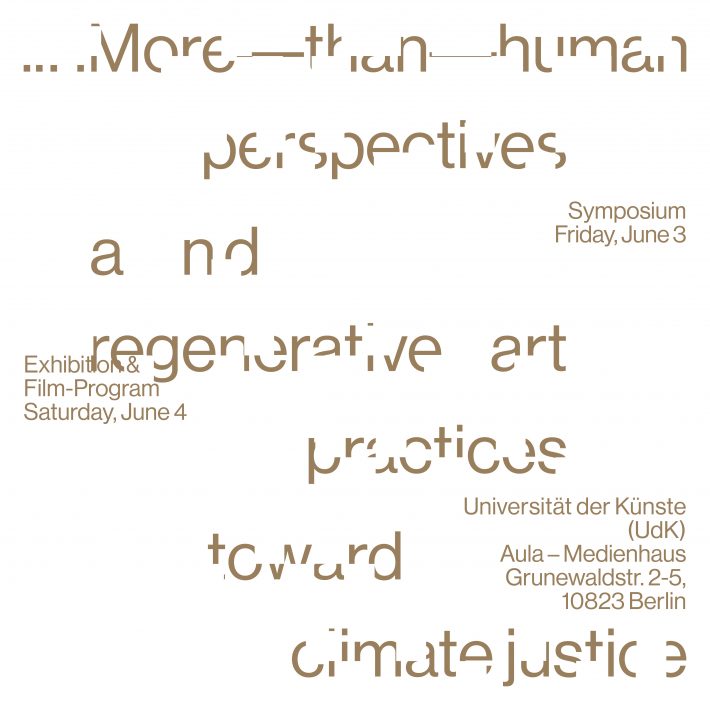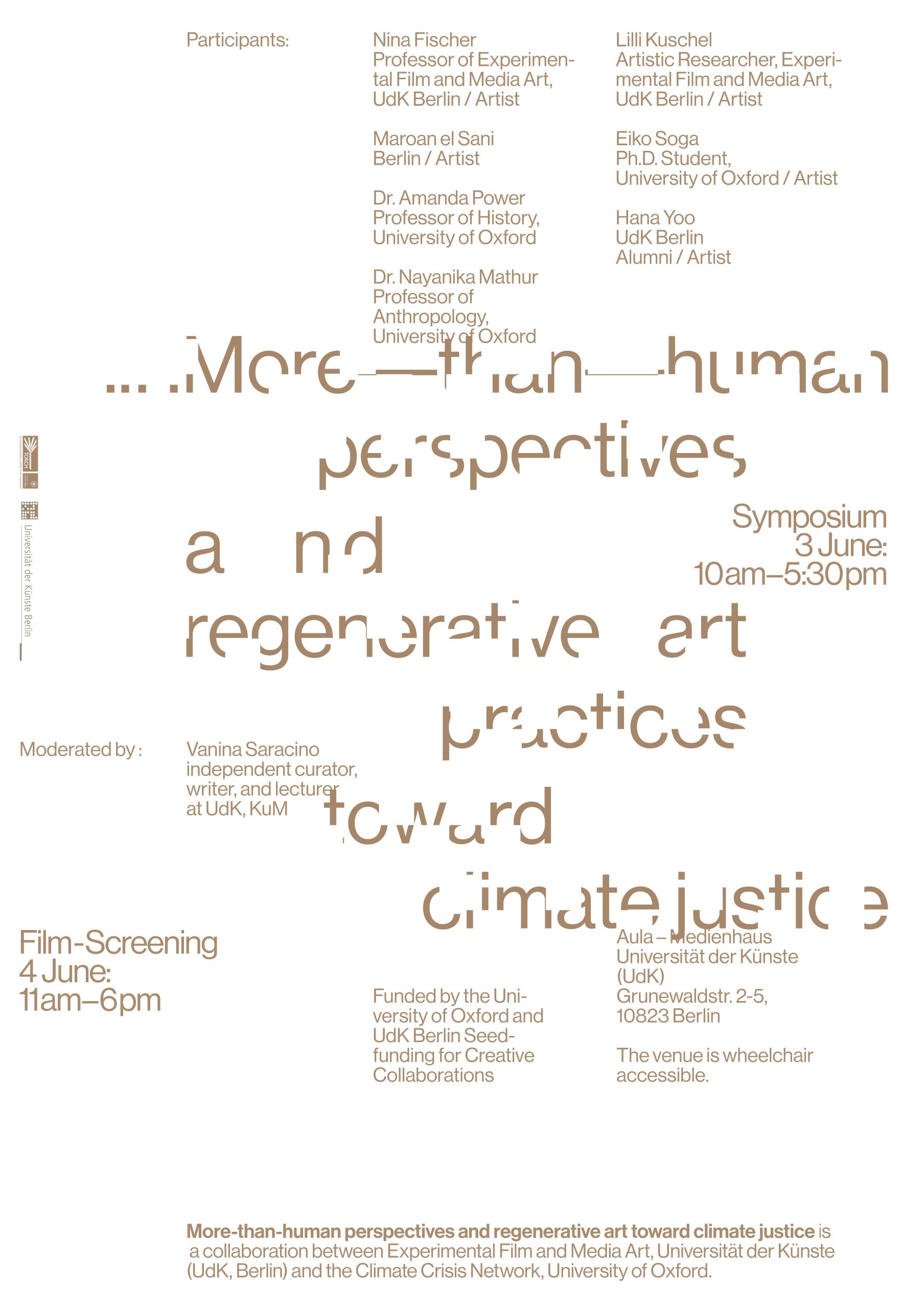
SYMPOSIUM
More-than-human perspectives and regenerative art practices toward climate justice
A collaboration between Experimental Film and Media Art, Universität der Künste (UdK, Berlin) and the Climate Crisis Thinking Network, University of Oxford.
3–4 June 2022
Universität der Künste (UdK)
Aula, Medienhaus, Grunewaldstr. 2–5, 10823 Berlin
The venue is wheelchair accessible.
Participants:
Nina Fischer, Professor of Experimental Film and Media Art, KuM, UdK Berlin / Artist, and Maroan el Sani / Artist
Dr. Amanda Power, Associate Professor of History, University of Oxford
Dr. Nayanika Mathur, Associate Professor of Anthropology, University of Oxford
Eiko Soga, Ph.D. student, University of Oxford / Artist
Lilli Kuschel, Artistic Researcher, Experimental Film and Media Art, UdK Berlin / Artist
Hana Yoo, UdK KuM Alumni / Artist
Moderated by Vanina Saracino, independent curator, writer, and lecturer at UdK, KuM
The dominant modes of thinking in the Global North are leading to the obliteration of alternative narratives, and to the loss of biodiversity with equal force. Collaborative strategies for more-than-human survival and the elaboration of other ways of living are now more urgent than ever. They require our efforts in joining minds and practices across political, geographical, cultural, and linguistic borders with a view to creating hybrid spaces for exchange and regeneration.
In this symposium and artist film program, we gather artistic practices and theoretical positions rooted in audacious encounters across different biological species, historical times, cultural narratives, distant cosmologies, and academic disciplines. We aim at conveying thoughts and practices striving to co-think and build together a more just future from an intersectional perspective. These acknowledge the multiple and differential levels of violence perpetrated by anthropogenic climate change on peoples and species, while also exposing the structural contradictions that our own research and practice may bring to the surface. The symposium will be structured in the form of roundtables presenting short individual inputs followed by an open discussion with the participants and the audience. The aim is to enable a space for artistic and academic storytelling. Here, practices and theories explicitly distancing themselves from anthropocentric thinking can converge and attempt together to responsibly create common patterns for regeneration around the two broad themes proposed.
Significant otherness beyond human exceptionalism
(Roundtable 10:30–13:00)
Across a set of apparently distant stories involving big cats, crows, cows, and humans, the first roundtable will mobilize the notion of significant otherness as “on-the-ground work that cobbles together non-harmonious agencies and ways of living that are accountable both to their disparate inherited histories and to their barely possible but absolutely necessary joint futures” (Haraway, 2003). The roundtable brings together artists and theorists to share their observations on interspecies communication and intersubjectivity beyond human exceptionalism, through specific case studies: the big cats in India’s central Himalayan region who are, inexplicably, making prey of humans in a landscape that is increasingly prone to climate disasters (Dr. Nayanika Mathur); the crows, cohabiting and co-creating the urban environments as an example of natureculture (Lilli Kuschel); the cows and the way their lives—like that of many other animals—have been affected by our use of technology as a necrotrophic device toward efficiency and profit (Hana Yoo).
The historical roots of anthropocentric thought and alternative narratives for the future
(Roundtable 14:00–17:30)
The second roundtable unpacks the historical roots of anthropocentric thought and considers alternative modes of living that have been marginalized or neglected by the dominant narratives—the indigenous epistemologies, amongst others—while also engaging in speculative thinking toward the elaboration of survival strategies for the future. Anthropocentric thinking is historically and culturally situated; understanding the context and power dynamics within which our contemporary ideas were formed is thus crucial to moving into the future (Amanda Power); dramatic events can either bring us to face the change together, therefore strengthening the notion of community, or they can split societies toward further atomization (Nina Fischer & Maroan el Sani); indigenous Ainu epistemologies emerge through their tales of hunting, replacing the Western indifference of killing animals with acts of respect and gratefulness toward each individual, acknowledging the need of reciprocity for surviving (Eiko Soga).
This two days symposium will enable encounters between artists and researchers to present their works and to expand the discourse on the topic of more-than-human perspectives and regenerative art practices toward climate justice, highlighting alternative worldviews and collaborative acts of survival rooted in careful consideration of other modes of thinking and doing.
Text by Vanina Saracino
Funded by the University of Oxford and UdK Berlin Seedfunding for Creative Collaborations.
SCHEDULE
Friday, June 3
SYMPOSIUM
Universität der Künste (UdK)
Aula, Medienhaus, Grunewaldstr. 2-5, 10823 Berlin
The venue is wheelchair accessible.
Roundtable: Significant otherness beyond human exceptionalism
10:00 Registration & opening with a welcome coffee
10:30 Vanina Saracino | introduction
10:45 Nayanika Mathur | Beastly Tales from the Indian Himalaya
11:10 Lilli Kuschel | Crow City
11:35 Hana Yoo | Splendour in the Grass – Woman, Animal, and Utopia
12:00 Roundtable discussion
12:30 Q&A with the audience
13:00 Lunch Break
Roundtable: The historical roots of anthropocentric thought and alternative narratives for the future
14:00 Vanina Saracino | introduction
14:15 Amanda Power | Dislocation and entanglement in the Anthropocene
14:40 Nina Fischer and Maroan el Sani | Die Alchemie der Wolken – Art, Activism and Splitting Communities
15:05 Eiko Soga | Animistic Gestures as Ecological Practices
16:30 Roundtable discussion
17:00 Q&A with the audience
Sound installation at the Aula:
Bea Targosz, Vibrations (firebug city), 2021
17:30 – 19:00
Exhibition at the UdK Galerie:
Nina Fischer & Maroan el Sani, Die Alchemie der Wolken – Art, Activism and Splitting Communities, 2021
Saturday, June 4
EXHIBITION AND FILM PROGRAM
Universität der Künste (UdK)
Aula and Medienhaus Galerie, Grunewaldstr. 2-5, 10823 Berlin
The venue is wheelchair accessible.
11.00–12.30 GALERIE
Nina Fischer & Maroan el Sani
Die Alchemie der Wolken – Art, Activism and Splitting Communities
6-channel video installation, Galerie, Medienhaus
and Q&A with the artists.
Coffee Break
13:00–14:30 AULA
Eiko Soga, Ainu Hunter Mon-Chan, 25 min, 2020
Lilli Kuschel, Crows, 15 min, 2022
Hana Yoo, Splendour in the grass, 18 min, 2020
Q&A with the artists after the screening
Lunch Break
15:00–16:00 AULA
City Creatures
Jana Charlotte Tost, Sunbathing flies (Fliegen, die sich sonnen), 4 min, 2021
Lisa Wintermantel, Resonare, 5 min, 2021
Lisa Wintermantel, Queen of the hill, 7 min, 2021
Hana Yoo, Bare Life, 16 min, 2021
Anan Yoon Lee, Stick Bugged Speedrun, 14 min, 2021–ongoing
Q&A with the artists after the screening
16:30–18:00 AULA
Decolonizing queer epistemologies
Thirza Cuthand, Extractions, 15 min, 2019
Bartolina Xixa, Ramita Seca, La Colonialidad Permanente (Dry Twig, The Permanent Coloniality), 5 min, 2019
Maíra Tristão, Transviar, 13 min, 2021
Q&A with the artists after the screening
PARTICIPATING ARTISTS
Bios of participants and short descrtiptions of their inputs:
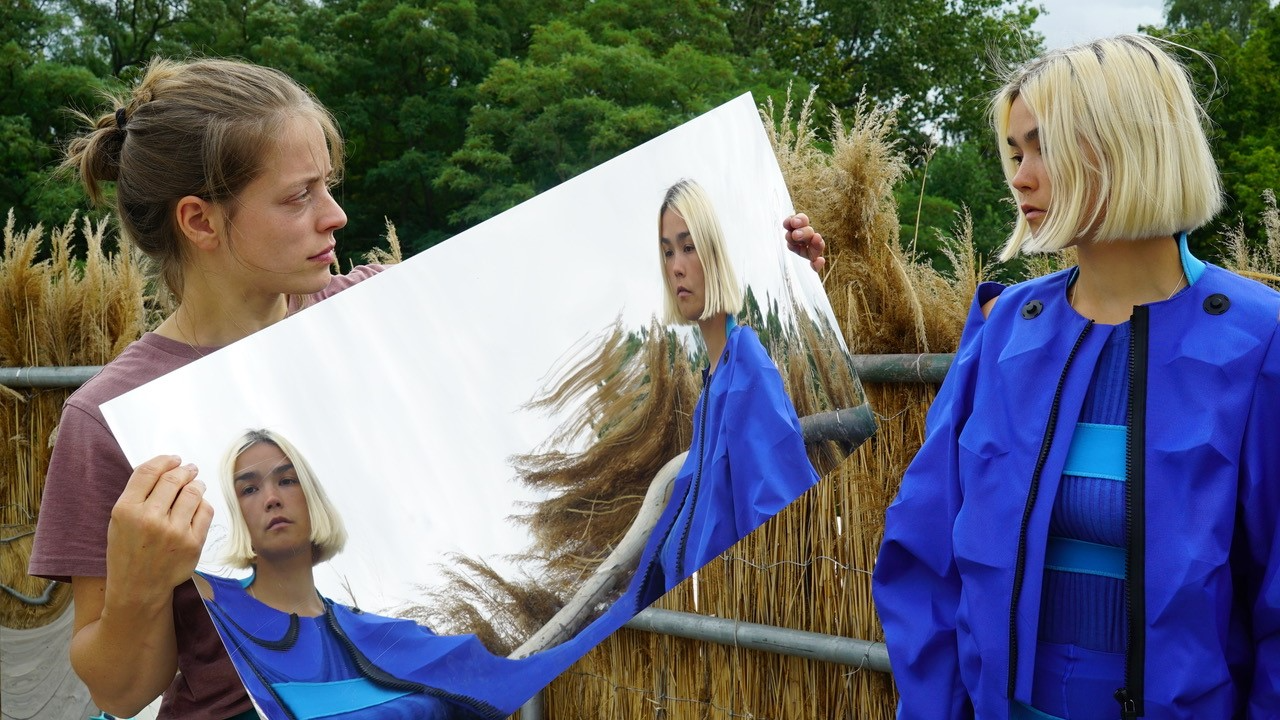
Fischer & el Sani have staged a simulation game in an urban biotope, the rainwater retention basin at Berlin’s abandoned Tempelhof Airport. Like the venue itself, the protagonists find themselves in a transitional situation. A glowing cloud hovering over a village becomes the catalyst for an ominous social divide. This cloud forces people to decide whether they want to try radically new ways of living and drastically curtail their consumption, or whether everything should remain as it is. The natural phenomenon is illustrative of a global problem, and represents differences and tensions. Fischer & el Sani pose key questions about the non-historical occurrence of division that paralyses and undermines societies around the world: Do we feel called to immediate action? Or do we want to limit our perception to one of a mere natural phenomenon and not draw any consequences?
Lilli Kuschel
In my practice as an artist, filmmaker and camerawoman I have been observing crows in urban space for several years – an ever growing video archive of these encounters has developed. Out of these cinematic observations of the birds, which relate to humans, non-humans and architecture, I am composing an experimental documentary film, in which the crows are subjects of an artistic fieldwork and city guides, leading me through two metropoles: Mumbai and Berlin. In the age of climate change and species extinction we need new perspectives on a growing urban animal life. Donna Harraway describes the world as an ensemble of heterogeneous social encounters, in which not all of the actors are human. In my work, I take Harraway’s thesis of the implosion of nature and culture, which she calls naturecultures, as an opportunity to ask questions about animals in an urban context: Who belongs to the city and who owns it, who is making city and how? Observing urban animals means challenging stereotypes: the natural habitat of many animals, for example the city crows, is the artificial, the cultural space of a city.
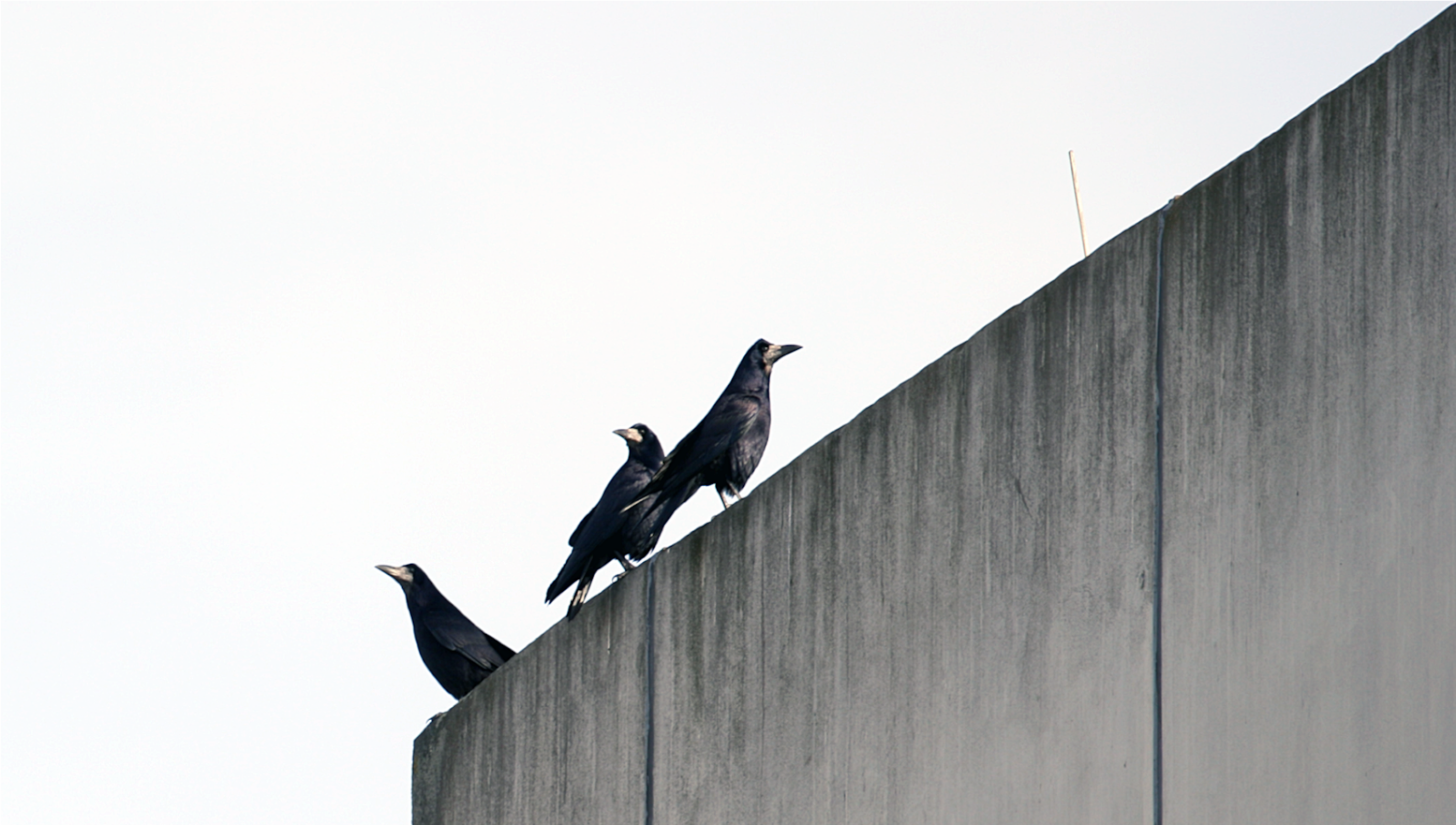
Nayanika Mathur
I am an anthropologist who has been working in India’s central Himalayan region for about 15 years now. I have recently published a book, Crooked Cats: Beastly Encounters in the Anthropocene (University of Chicago Press, 2021) that retells the story of big cats that make prey of humans in light of the climate crisis. My current research interests are centered upon finding new methods and means of researching – and communicating – the climate crisis. Much of this work builds up from research in the Himalaya where the climate crisis is increasingly visible in daily life and is making the region increasingly uninhabitable and hostile in alarming ways, for humans and nonhuman animals alike. I am particularly interested in breaking the stranglehold of Eurocentric thought and representation on the climate crisis and in finding decolonial methods and tools of expression. My interest in the Berlin project comes from a desire to work more closely with artists, film-makers, and those who use visual and oral modes to express the contemporary moment. At the workshop in Berlin, I plan to talk about this question of method and suggest new forms of collaborations across the arts, humanities, social sciences, and climate science.
Amanda Power
I am a medieval historian with long-standing interests in the connections between how people have thought in past and present, how thinking is shaped by dominant interests in societies, where alternative imaginations may have been at work, and what became of them. I am currently working on a monograph, Medieval Histories of the Anthropocene, which explores questions concerning the relations between religion, power and the construction of public rationality in the building of medieval states across Eurasia. I am interested in how these centralising processes consciously dislocated humans from local ecosystems and specific and sustainable practices, while creating powerful and enduring narratives about civilisation, barbarism, and the use of resources. These ideas legitimised, even demanded, the subsequent devastation of European colonialism and the ongoing harms of imperialism and neoliberalism. They are also driving the public, economic and political rationalities that are bringing so much life on earth to the brink of extinction. This is why I think understanding the context and the power dynamics within which our contemporary ideas were formed is crucial if we are to reimagine a liveable future for human and other-than-human life on this planet.
Monks and warlords hungry for dominion over new lands and populations justified their actions through a series of ecological metaphors. They wrote of conquering and controlling human populations in a language of taming the earth, rooting up native plants, planting and harvesting monocrops, for the glory of their lord. They delegitimised the investment of defeated populations in their local surroundings by writing derisively of their intimacy with trees, rivers, stones. They worked hard to break those intimacies and replace them instead with commitment to centralising and earth-transcending abstractions. They cut down ancient trees and they denounced birdsong as the seduction of demons. They destroyed forests and drained wetlands, damaging unique ecosystems. The entanglement of metaphors and realities of governance will be my subject in the workshop. I will be thinking about what kinds of future politics might arise from a deeper historical understanding of how more-than-human relationships have been formulated over time.
Eiko Soga
Through my practice-led PhD research, using photography, moving images, and creative writing, I have been questioning how the practice of art can embody and share ‘felt knowledge’ of the more-than-human world.
Between 2020 and 2021, I worked with an indigenous Ainu elder called Ms Kane Kumagai who is the last person to hold traditional Ainu knowledge in Samani in Hokkaido, Japan. Through learning traditional Ainu cooking throughout different seasons, I have explored how our sensory knowledge-based engagement contributes to a diverse ecosystem. I looked at cooking as a space to exchange empathy, mutual effort, insights into local eco-diversity, and lived knowledge in order to unpack social-cultural-natural landscapes. I focused on knowledge perceived through my physical senses such as smell and touch to move away from the social norms and education that have been imposed by imperialistic, capitalistic, and misogynistic culture and unhealed traumas.
I have experimented with a form of storytelling that includes intimate, complex, and intangible aspects of life that affect our personal and social milieu. My approach to writing followed the artistic expression by renowned Japanese poets such as Sei Shōnagon (c. 966 – 1017 or 1025) and Yukio Tsujio (1939-2000) while valuing the approach taken by the indigenous Canadian scholar and artist, Leanne Betasamosake Simpson. The centre of her theory is ecological, which includes practicing traditional indigenous values passed down by her ancestors while welcoming new knowledge.
Working with Ms Kumagai taught me that keeping a sense of friendships with people, plants, animals, and objects in everyday processes through a cycle of seasons is crucial to sustaining knowledge and the ecological environment for both people and nature. Such engagement with the world is rooted in a sense of animism as an ecological practice and communication that once Ainu culture shared with neighboring cultures.
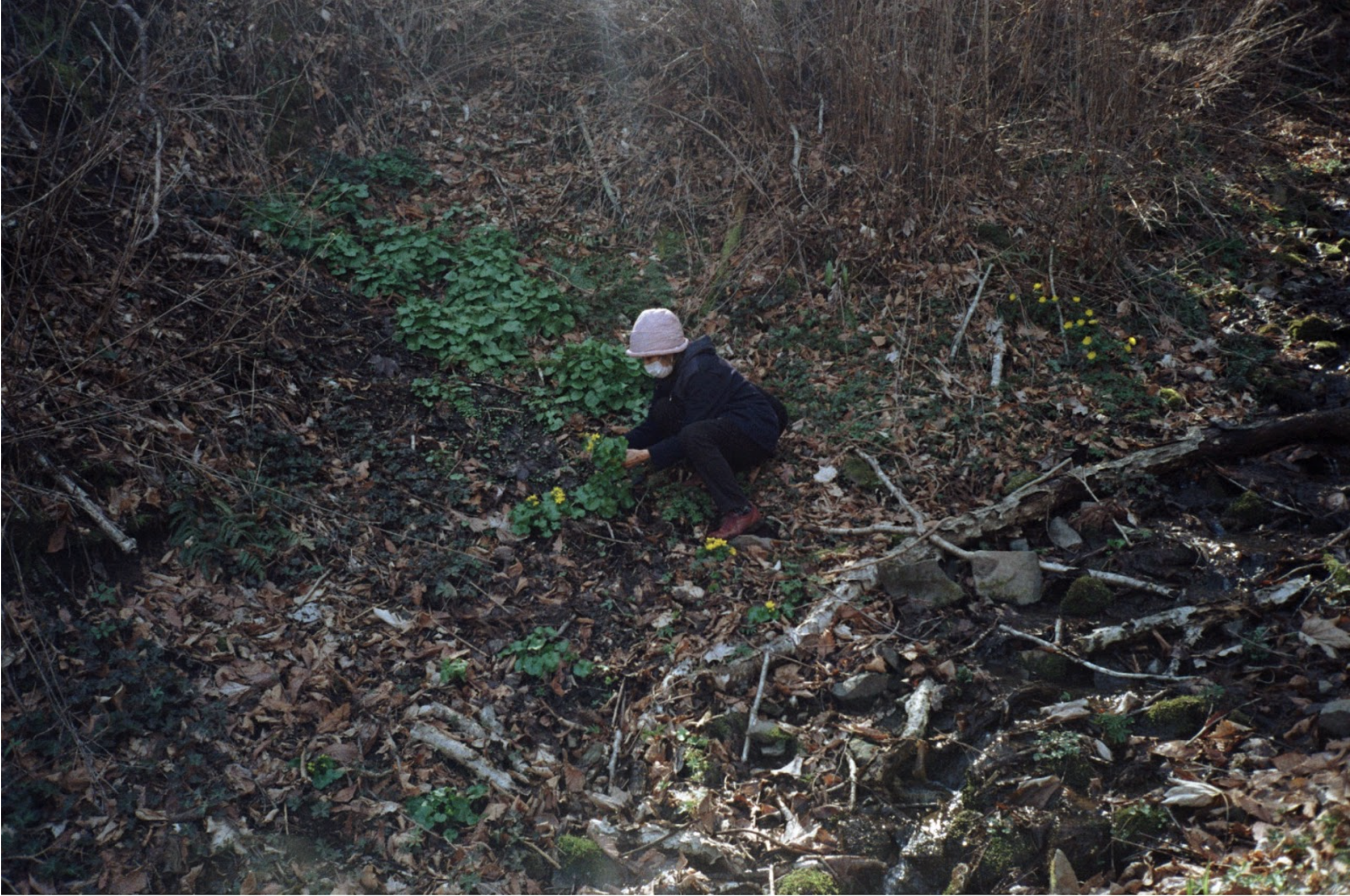
Hana Yoo
Splendor in the grass
The project started with inspiration from an experiment conducted on cattle at a dairy farm in Moscow, showing them a virtual image of peaceful grassland on a cow-customized VR headset. The article that describes this experiment implies the VR experiment reduces the anxiety of cows and has shown a possible increase in milk production.
The utilization of technical apparatus in the welfare of both humans and animals have different purposes, e.g. cows for milk and meat production – humans for improving their quality of life. However, the subject-object relationship in the scientific experiment has strong similarities in the dynamic between the political system and the people. The assumption that presenting utopian images will reduce anxiety connects to the sovereign control of mental health and female reproductive labor being the ultimate catalysis for capitalism.
With various purposes, the endeavor to change perspective and overcome the boundary of visual perception has been technologically achieved, for instance in VR. However, it simultaneously reveals numerous limitations that oversimplify the individual’s experience and relationship to their environment, along with not taking into account the psychological implications in their entirety. How could one embrace the complexity while detouring from the idea of ‘self’? Inspired by children’s stories and human-animal metamorphosis in mythologies, the film and installation take an extremely exaggerated anthropomorphic view of non-humans, which paradoxically reveal the position of humans to widen perceptions, whilst confronting limitations.
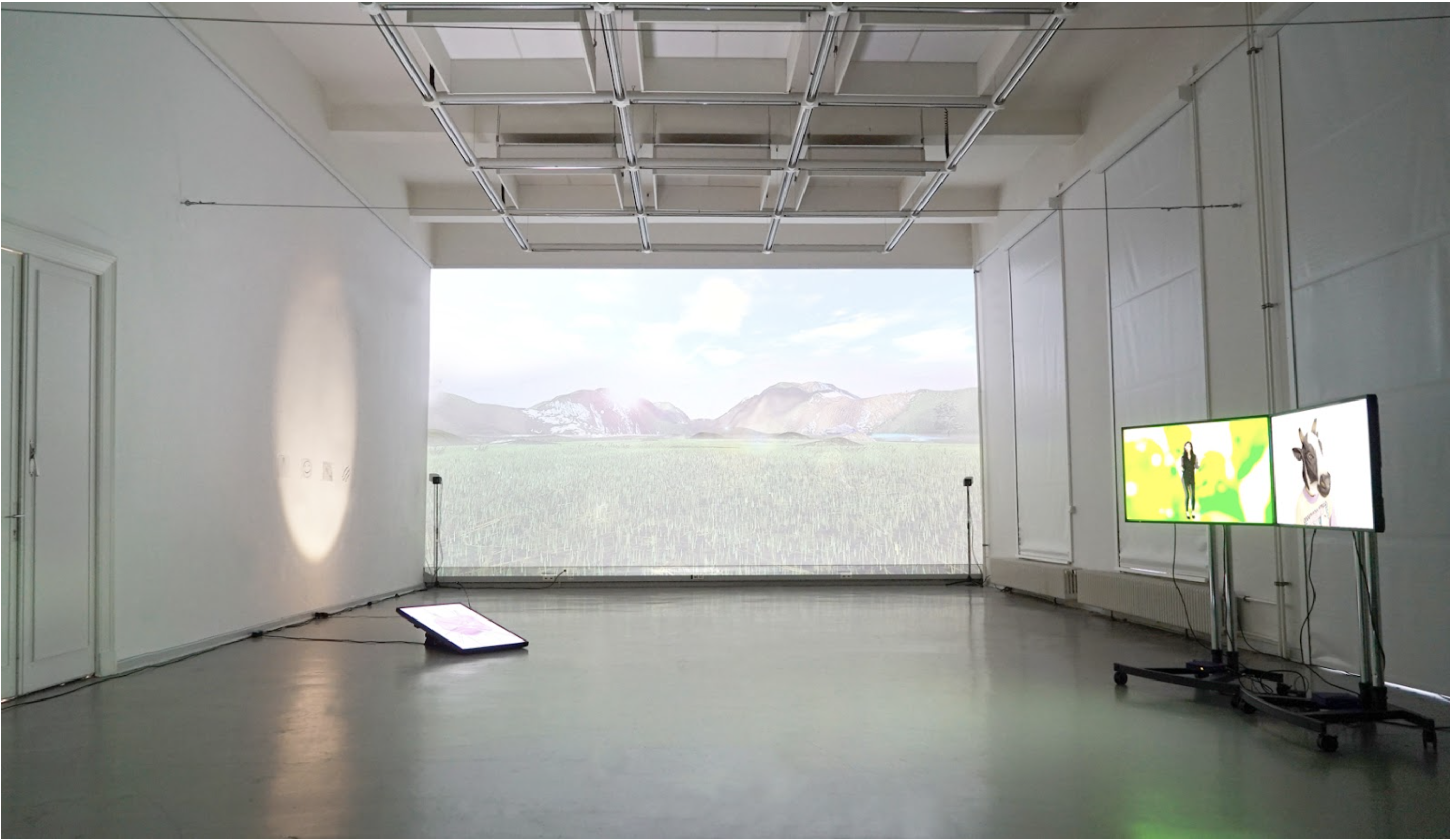
ARTISTS for the FILMPROGRAMM and synopses of their works :
Maíra Tristão
Transviar
Documentary short-film. 13’09’. HD (16mm)
Maíra Tristão is a filmmaker, producer and researcher. Doctoral candidate and master in Cinema with a bachelor in Sociology. She researches gender issues and visual culture in Latin American cinema. In 2019/2021 Maíra was a DAAD fellow as a guest student at UDK to develop a short-film project. As a director, she mainly works on documentary films with feminist and social themes.
Transviar synopsis:
Carla da Victoria was born into the ‘clay potters’ tradition, the name given to women who make clay pots in the city of Vitória/ Brazil. A transsexual woman, Carla is a daughter, granddaughter and great-granddaughter of potters. She learned to shape pots in the same way that she shaped her identity. Transviar is about breaking rules and the encounters that the mangrove swamp can bestow. The short-film was shot in 16mm.
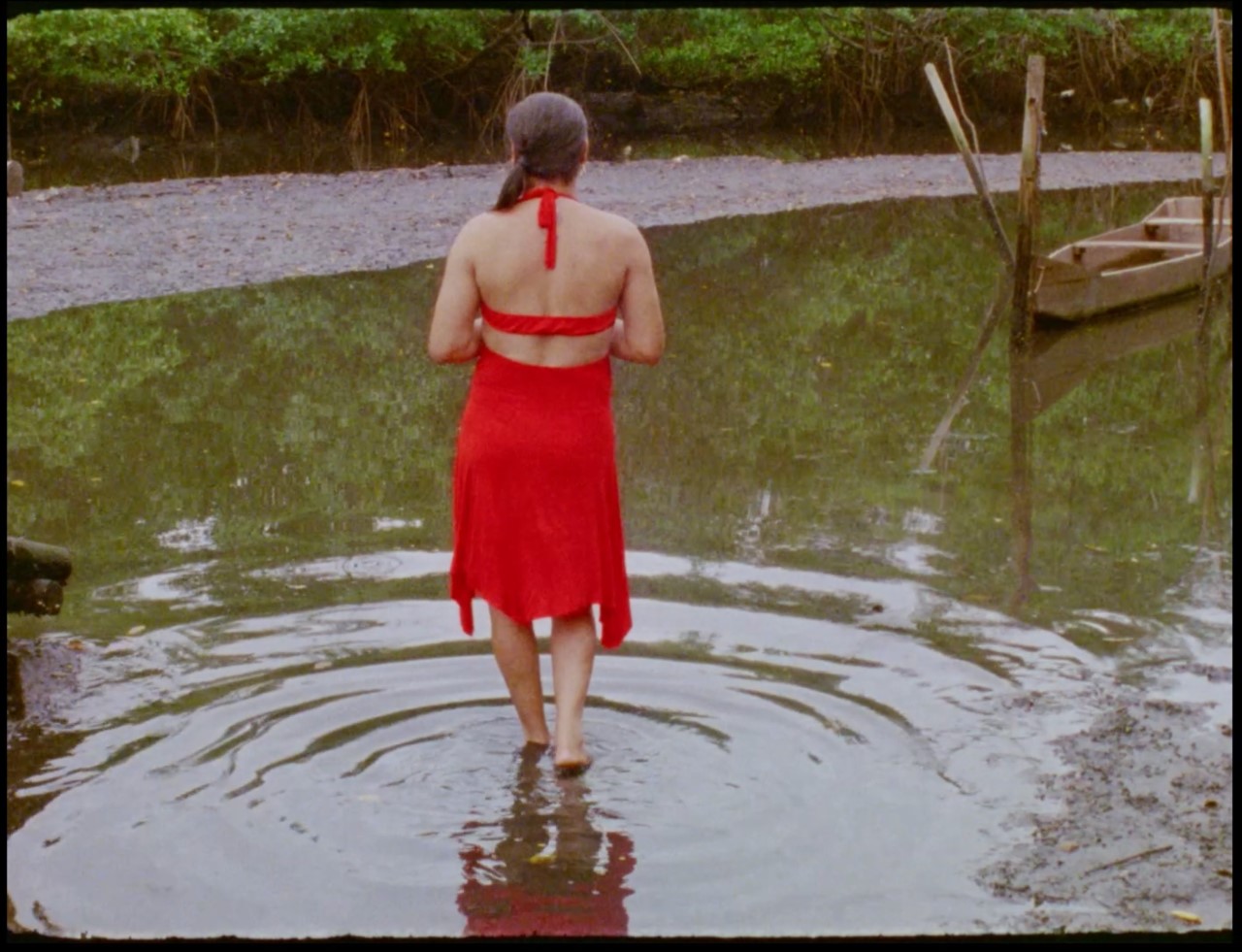
Thirza Cuthand
Filmmaker/Artist/Writer
Thirza Jean Cuthand (b. 1978 Regina SK) makes short experimental videos and films about sexuality, madness, Queer identity, love, and Indigeneity, which have screened in festivals and galleries internationally. He completed his BFA majoring in Film/Video at Emily Carr University of Art and Design in 2005, and his MA in Media Production at X University in 2015. He has performed at Live At The End Of The Century in Vancouver, Performatorium in Regina, and 7a*11d in Toronto. He is a Whitney Biennial 2019 artist. He is Plains Cree/Scots, a member of Little Pine First Nation, and resides in Toronto, Canada.
Work Title: Extractions
Technical info: Prores file, 15:12 min, 2019
This film parallels resource extraction with the booming child apprehension Industry. As the filmmaker reviews her life and how these Industries have affected her, she also reflects on having her own eggs retrieved and frozen to make an Indigenous baby.
Bartolina Xixa
Ramita Seca, La Colonialidad Permanente

Lisa Wintermantel
Artist Wintermantel refers to her immediate surroundings. Living in the city, with the animals. Dialogues between Wintermantel and the urban landscape are often placed in a documentary position, as the view of `others`, whether pigeon or human narrate the different ways of life. „My medias are not limited, just like any story. Therefore, it doesn’t matter what I use or how I do something, as long as I can find a way to convey myself and what i see.“
RESONARE – where we live
A dialogue about ways of life / Color Video, 5:00/ 2021/22
An observation of species, their scales and their surroundings. An interplay of temporal rhythms and sounds in which accumulating ways of life and options meet. The dialogue is inspired by texts of the philosopher Bruno Latour and a conversation with biologist Cord Richelmann.
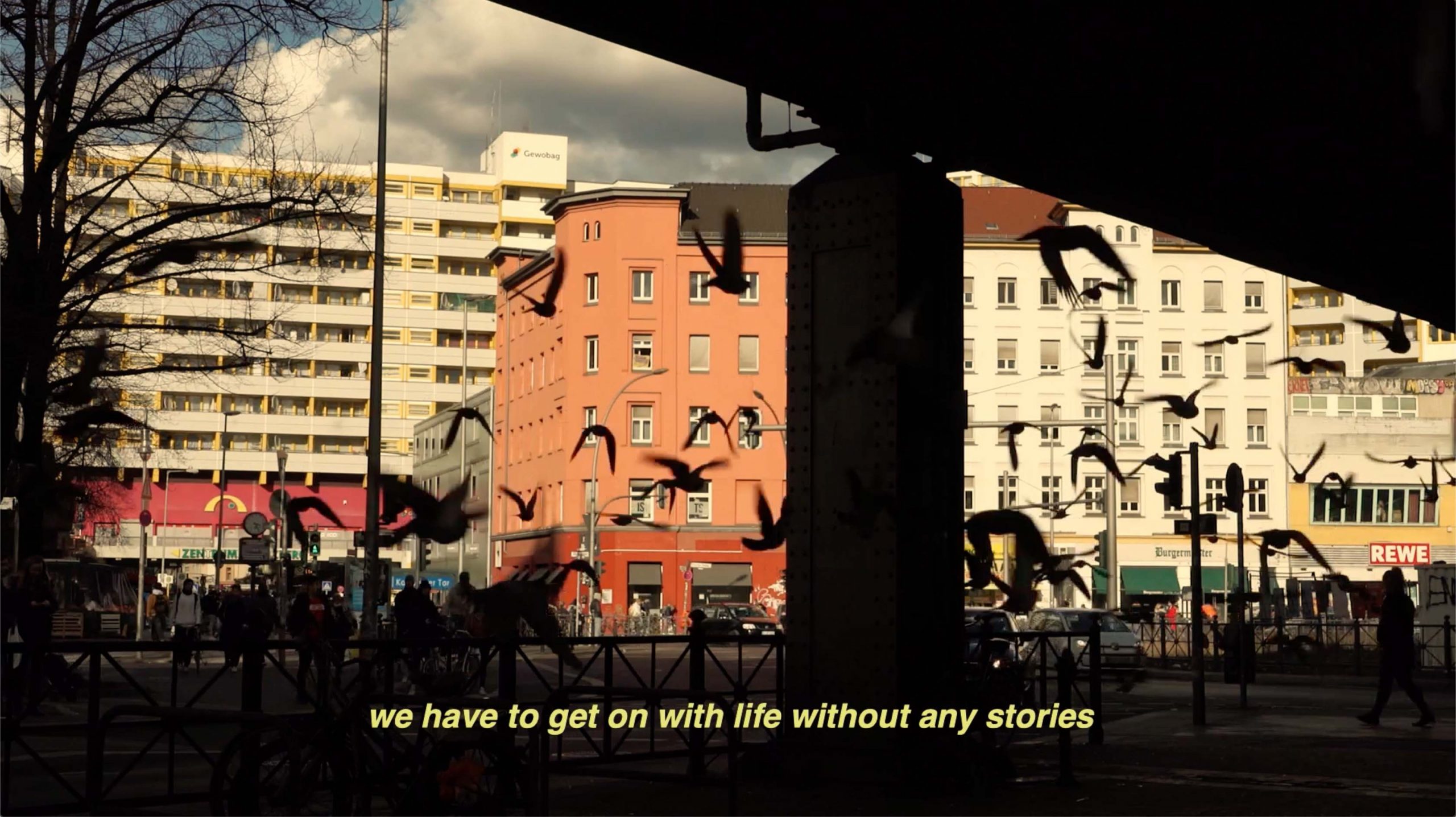
Lisa Wintermantel
QUEN OF THE HILL
Color Video, 07:48 / 2021/22
A documentary work with several narrative strands about the life of urban pigeons. The text is a collection of notes from recent research.
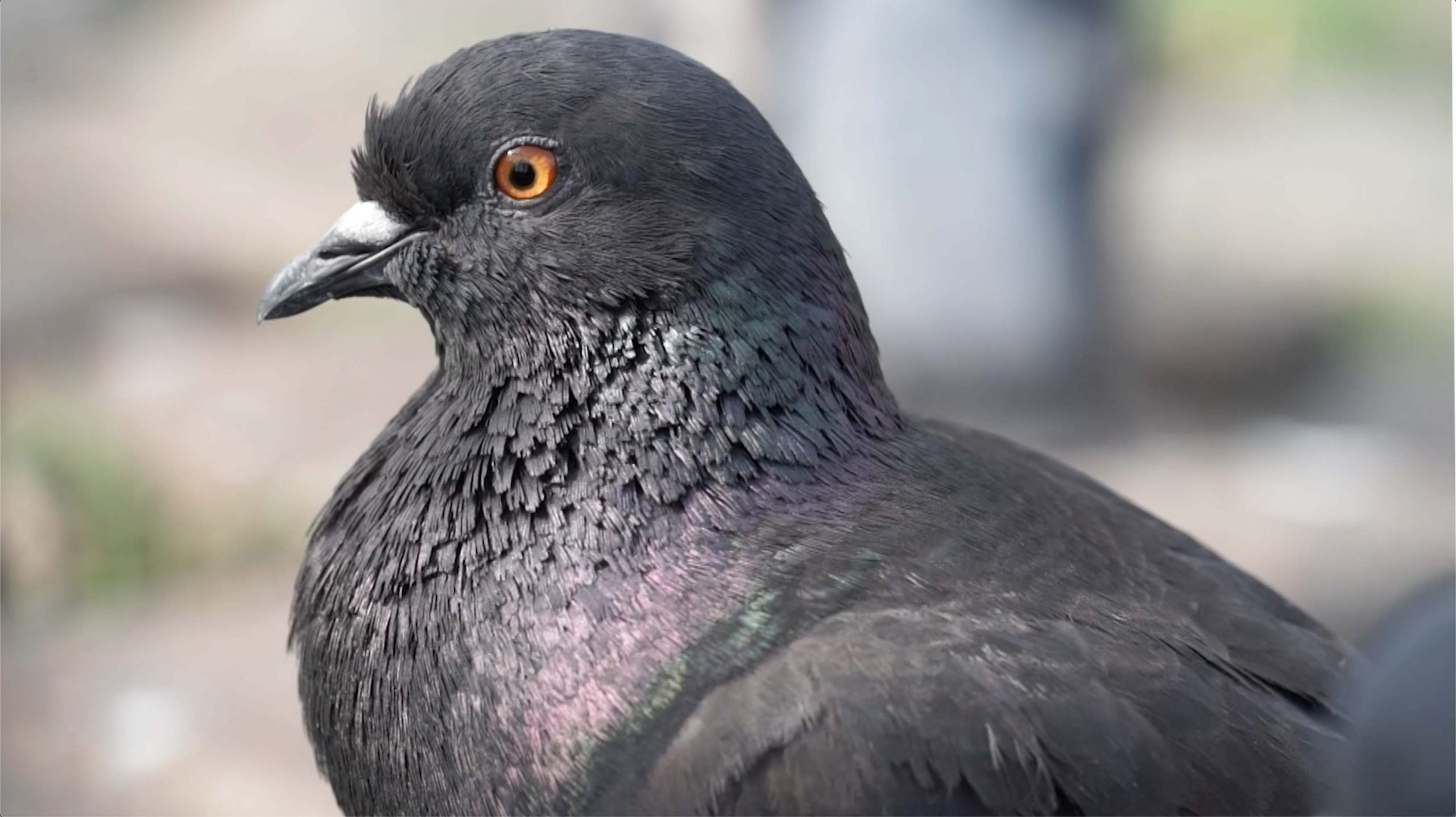
Hana Yoo
She is interested in investigating the collective anxiety and transcendental experiences, formulated from the natural-artificial process of reversing perspective. Working in film and multimedia installation, she engages with the allegory of nature and technological appropriation in the context of human-environment transformation and reconstructs them through storytelling. Her works have been shown at museums and festivals internationally including the Fotomuseum (Winterthur, CH), European Media Art Festival (EMAF, DE), and Busan International Video Art Festival (Busan, KR) among others.
Splendour in the Grass
The project started with inspiration from an experiment conducted on cattle at a dairy farm in Moscow, showing them a virtual image of peaceful grassland on a cow-customized VR headset. The article that describes this experiment implies the VR experiment reduces the anxiety of cows and has shown a possible increase in milk production.The utilization of technical apparatus in the welfare of both humans and animals have different purposes, e.g. cows for milk and meat production – humans for improving their quality of life. However, the subject-object relationship in the scientific experiment has strong similarities in the dynamic between the political system and the people. The assumption that presenting utopian images will reduce anxiety connects to the sovereign control of mental health and female reproductive labor being the ultimate catalysis for capitalism.
Synopsis: Cow takes experimental psychotherapy with Mary, assumably the psychiatrist, who gave a prescription to cow the virtual reality treatment. During the session, the cow goes through her memory trip and illusive experience, which at the end, blur the identity of the cow herself, whether she is an animal or human, subject or object in the treatment.
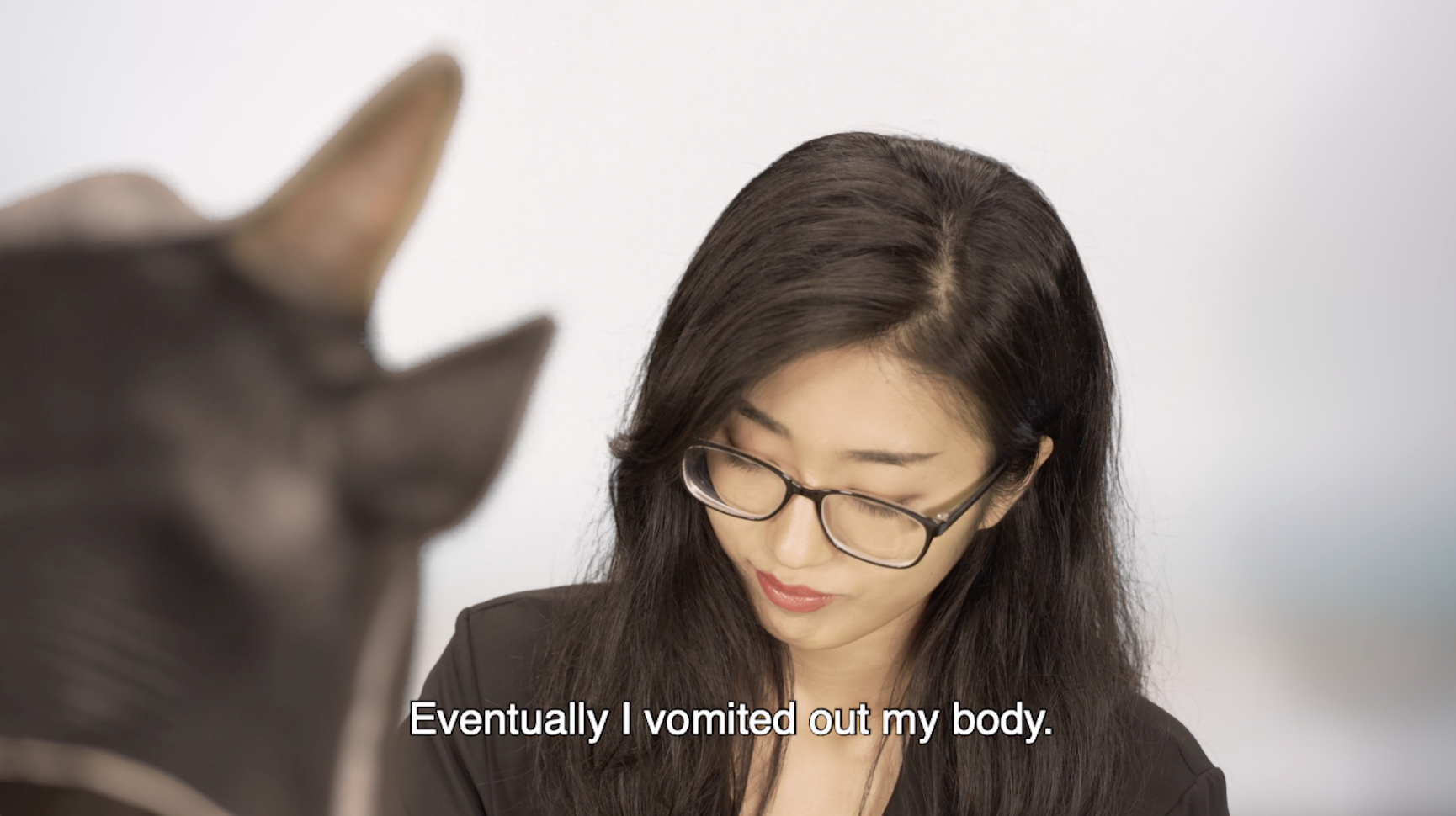
Hana Yoo
Bare Life depicts a loosely structured, contested concept of freedom tied to various cases and agents: killing and being killed, machines recognizing pain, and the complex ecosystem of empathy that occurs in response. The film investigates three cases in parallel (the order of cases is not sequential). Case 1 shows archival footage of a pest controller specializing in eliminating wild rats with an air gun. Case 2 introduces an interlocutor whose face is covered, sharing personal stories about her idea of freedom and being “inside and outside.” Case 3 describes an experiment from Animal Welfare Laboratory. The project uses deep learning (artificial intelligence) systems to analyze facial expression data of laboratory mice, before and after anesthesia/surgery, suggesting a tool for recognizing the suffering and pain of mice
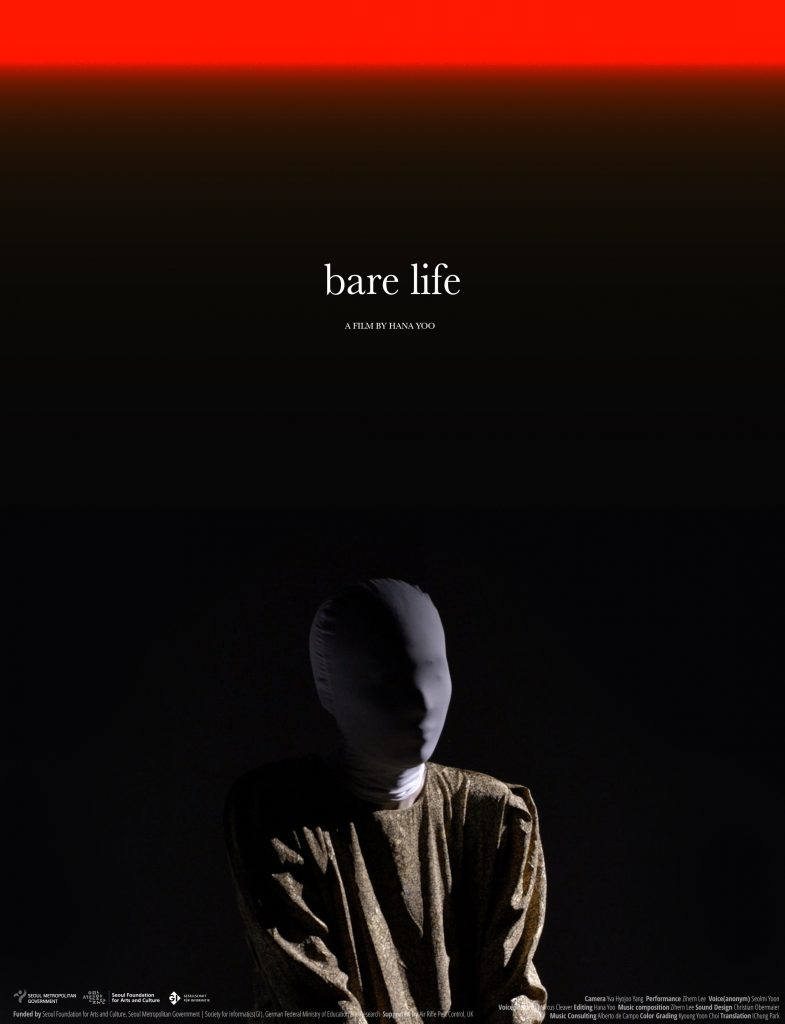
Jana Charlotte Tost
Sunbathing flies (Fliegen, die sich sonnen)
Duration: ca. 4:50 min
They swarm out when the sun comes, landing on my balcony.
A contemplation of the coexistence begins: the flies dance, fight, sit
to sunbath, meanwhile the city sounds tell of a construction site,
passing-by trams, short conversations, pigeons and crows flying past.
Visual fragments of the opposite house facade and of passers-by meet
the flies microcosm.
Slowly the sun disappears and with it the flies.

